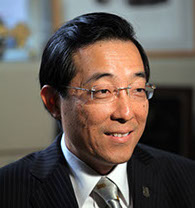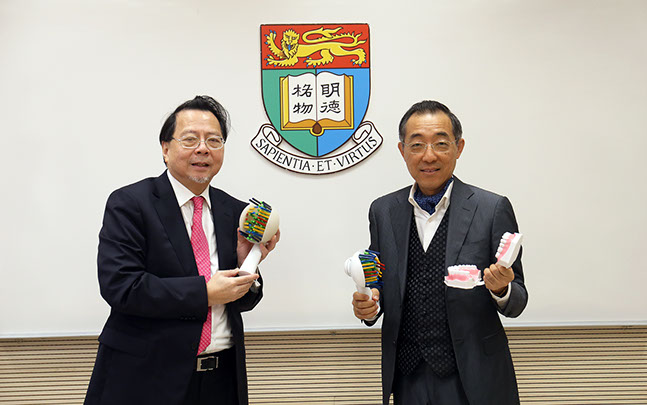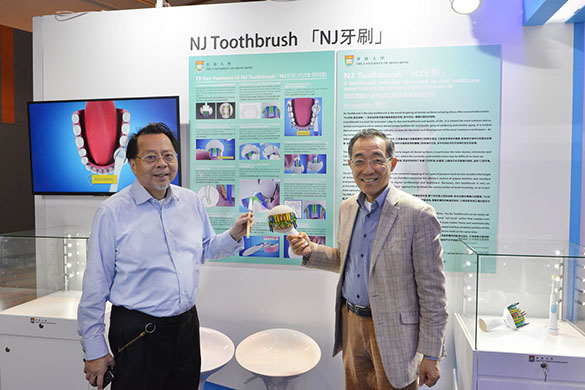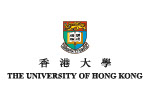The Global Burden of Disease (GBD) study (1990–2010), the largest and most systemic worldwide health study which keeps track of 291 diseases across the globe, includes in its top 10 most prevalent afflictions the two most common oral diseases.
“Number One on the GBD study is Untreated Decay in Adults; Number Six is Severe Gum Disease (severe periodontitis) and Number 10 is Untreated Decay in Children,” said Professor Jin Lijian, Modern Dental Laboratory Professor in Clinical Dental Science and Professor in Periodontology at the HKU Faculty of Dentistry.
“Oral diseases cause a great deal of suffering, and have huge socioeconomic impacts worldwide in terms not only of money spent treating and researching them, but also in school and work hours lost,” he continued, citing too a survey of 27 European Union countries showing that 79 billion euros was spent on treating oral problems on annual average from 2008 to 2012, a figure predicted to reach 93 billion euros by next year. Further, the GBD study 2010 indicates that over half the world’s population (3.9 billion) has been affected by common oral diseases including decay, severe gum disease and tooth loss.
There is much discomfort, suffering and money spent, and these were the factors which inspired Professor Jin, together with Dr TC Ng, a local dentist and pioneering designer of precision tools for space exploration, to invent the NJ Toothbrush, named using the initials of both their last names. Their toothbrush was awarded a Gold Medal at the 47th International Exhibition of Inventions of Geneva in April this year.
“For oral health, proactive prevention is the key,” said Professor Jin. “One of the reasons these oral diseases are so prevalent is often lower awareness of oral health and lack of knowledge about basic oral health care. Other reasons may include fear of going to see the dentist and the common attitude problem that says, ‘I won’t seek help until I’m actually in pain.’ In Hong Kong, there is often a saying ‘mou tung, mou beng’, meaning ‘no pain, no disease’.”
Hence, people frequently ignore decay, until it really hurts. Gum disease often creeps up unnoticed, as it can develop and progress without any warning pain.
“We may call gum disease a ‘silent disease’, and many patients wait too long,” he said. “Periodontitis has actually been associated with major life-threatening afflictions such as diabetes, heart disease and some forms of cancer, and most recently Porphyromonas gingivalis – the major pathogenic bacteria of periodontitis, has been found to be directly involved in Alzheimer’s disease/dementia.”
Professor Jin and Dr Ng first met a couple of years ago, and started discussing the problem of low public awareness of oral health, oral hygiene challenges and potential ways to improve how people brush their teeth.
“TC has a very inventive mind,” commented Professor Jin. “He did work with NASA and the European Space Agency some years ago, notably inventing the ‘cosmic’ drill that dug into the surface of Mars and collected the samples from the red planet in 2003 through the Beagle 2 lander.”
The pair looked at the limitations of conventional toothbrushes, as well as at the physiognomy of the mouth and different sizes of front and back teeth.

![]() Inspired by the high-speed train, the NJ Toothbrush literally stays on track. It follows the curving line of the teeth and couples precisely over the upper and lower dental arches.
Inspired by the high-speed train, the NJ Toothbrush literally stays on track. It follows the curving line of the teeth and couples precisely over the upper and lower dental arches. ![]()
Professor Jin Lijian
Targeting ‘dead corners’
What they came up with is a novel product specifically designed to target all dental surfaces and niches, in particular the inter-dental, retromolar and sub-gumline niches, the so-called ‘dead corners’ where current toothbrushes may not reach effectively.
They developed it using precise computer-mapping of six types of purpose-built bristle-bundles that reach all dental-gingival surfaces and niches, with the aim of maximising control of plaque biofilms and thereby reducing the likelihood of oral inflammation.
“Inspired by the high-speed train, the NJ Toothbrush literally stays on track,” said Professor Jin. “It follows the curving line of the teeth and couples precisely over the upper and lower dental arches. The tracking does the work for you – it guides the toothbrush and the hinged head means you don’t even have to turn the brush round to reach the other side of your mouth.
“Another featured function is ‘automatic coupling’, whereby the head expands and contracts so that it always fits snugly round the tooth, whether a fat molar or thin incisor.”
HKU’s Technology Transfer Office (TTO) gave the two inventors seed funding and encouragement, and has secured the patent for this new product.
Professor Jin said: “HKU has many patents every year, but relatively few will go directly to lay people so we are very happy with this achievement. The patent was granted quickly as there is nothing similar on the global market. The TTO has already had meetings with potential developers, and we hope the NJ Toothbrush will be available on the market in 18 months or so.”
In the future, it will also be possible to customise the NJ Toothbrush to individual needs. “You will be able to have a toothbrush tailor-made to fit your mouth precisely,” said Professor Jin, “thereby improving your teeth cleaning ability for better oral health and general health.”

Fast track to
healthy teeth
A high-speed train was one of the inspirations behind the NJ Toothbrush, a new concept in brushing which targets all dental surfaces and niches, and enables users to brush more effectively.
Next
Back
Dr TC Ng (left) and Professor Jin Lijian (right) showcasing the NJ Toothbrush at the InnoCarnival 2018.

HKU dental professionals have invented the ‘NJ Toothbrush’ – a revolutionary new concept in toothbrushing.
Home
May 2019
Volume 20
No. 2

Research
